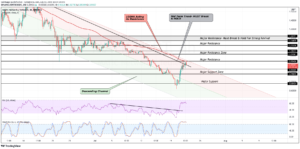Default configuration settings in Microsoft Windows 10 sacrifice GPU performance for power savings. You can change that with a simple tweak of the Graphics settings.

Image: pathdoc/Shutterstock
In an attempt to save power, particularly battery power in laptops, Microsoft Windows 10 uses specific configuration settings that can impact the overall performance of your PC in negative ways. These settings are fine for most users but some of us would like to get all the performance out of our rigs they can offer.
The Windows 10 Graphics settings screen is one of these performance-limiting configurations. The main setting is in the “off” position by default regardless of how powerful your GPU may be or whether you run on battery power or are plugged in. This is a waste of your expensive high-performance hardware.
This how-to tutorial shows you how to get the most out of your GPU by changing this default Graphics setting.
SEE: Checklist: Securing Windows 10 systems (TechRepublic Premium)
How to increase PC performance and get the most out of your GPU
The simplest way to find the Windows 10 Graphics settings screen is to type “graphics settings” into the desktop search box and then select the correct item from the search results. However, if you are a menu navigation person, the configuration screen can be accessed via a link on the Display settings screen located in System settings.
Once on the Graphics settings screen (Figure A), change the setting cryptically labeled “Hardware-accelerated GPU scheduling” to the On position.
Figure A

Changing this setting will allow your GPU to actively participate in how your Windows 10 or Windows 11 PC displays screen content. If you have a dedicated GPU from AMD or NVIDIA this could vastly increase the overall performance of your operating system
Note that after you make this setting change, the system must be rebooted for it to take effect. There is also a little-known and seldom-used keyboard combination shortcut that you could use to apply the change without a complete system restart.
Win+Ctrl+Shift+B
The shortcut key combination of Win+Ctrl+Shift+B will reset just the graphics subsystem of your Windows PC. When pressed, the screen will go blank for a second or two and then return with the new configuration setting applied.
With Hardware-Accelerated GPU Scheduling in the On position, you can now use the second section on this screen to specify preferences for specific applications found with the Browse button. We are using Microsoft Edge in the example shown in Figure B, but you would likely choose applications like video editors, CAD programs, databases or productivity apps like Microsoft Excel and Word.
Figure B

With your application selected, click the Options button and choose how you want to optimize your GPUs. As you can see in Figure C, the default is to let Windows decide, which will allow active switching between GPUs depending on current performance requirements. Selecting the more powerful GPU to always be active will increase performance for that application but it will also use more power to do so.
Figure C

If you find these settings to be draining too much battery power, you can change it back to the default settings. This may be necessary when you are on the road and have to run a laptop on battery power, for example. However, if you are on a desktop or only use your laptop when it is plugged in, upping the performance with an always-active GPU with this simple configuration change may be worth the effort.
Also see
- "
- active
- All
- AMD
- Application
- applications
- apps
- battery
- Box
- CAD
- change
- company
- content
- Current
- databases
- Edge
- fine
- GPU
- GPUs
- Hardware
- How
- How To
- HTTPS
- image
- Impact
- Increase
- Insider
- IT
- Key
- laptop
- laptops
- LINK
- Microsoft
- Navigation
- Nvidia
- offer
- operating
- Options
- PC
- performance
- Plugged
- power
- Premium
- productivity
- Programs
- Reading
- Requirements
- Results
- Run
- Screen
- Search
- selected
- setting
- Simple
- So
- system
- thumbnail
- tips
- tutorial
- us
- users
- Video
- weekly
- windows
- worth


